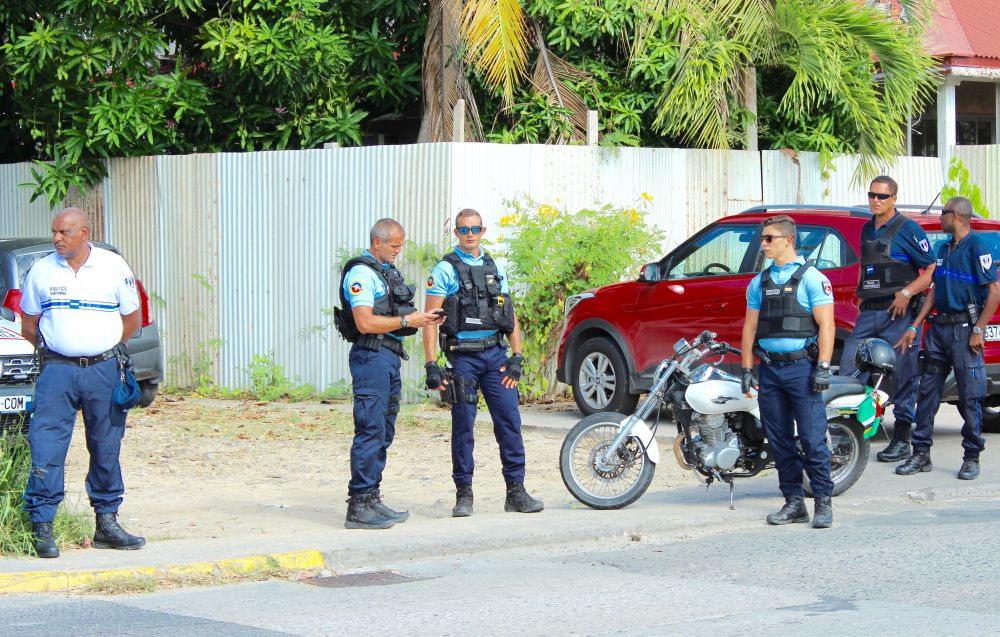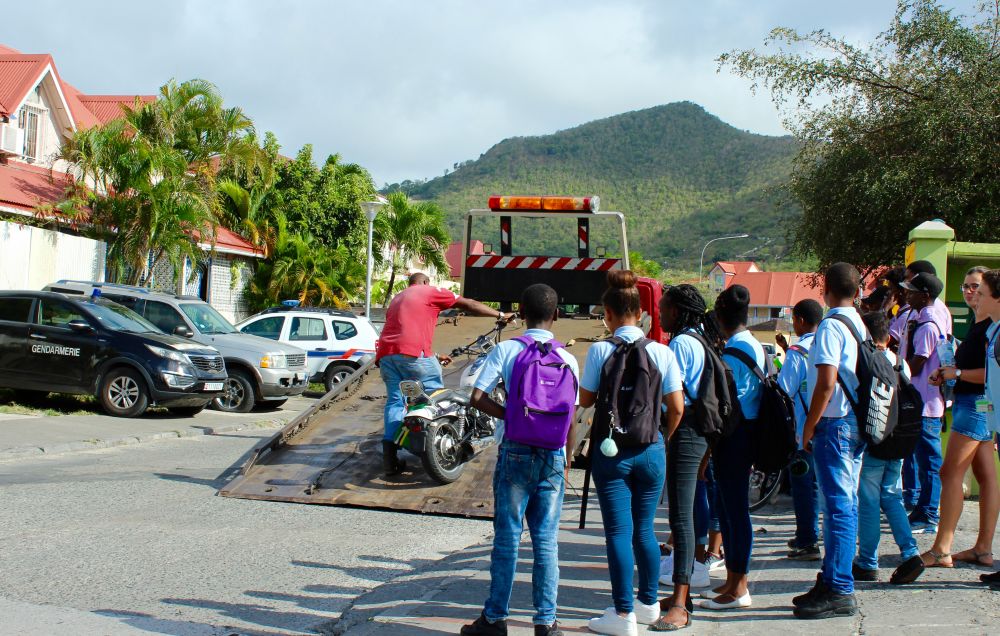Checks on two-wheelers: the first use of a curvometer in Saint-Martin
In the context of the GLTD (French acronym for ‘Local Group for Delinquency Management’), the Saint-Martin gendarmerie is emphasizing stronger monitoring of two-wheelers in Saint-Martin, with the support of the local collectivité (CLSPD) and the territorial police during the first half of 2017. "Two-wheelers are often vectors of crime, but they are also the first victims on the road," explains Captain Turlan-Arto, who directed the operation. Indeed, the two people killed on the road in Saint-Martin since the beginning of the year were on a two-wheeler.
On Monday, April 24, between 3 and 6 PM, 40 gendarmerie and territorial police officers conducted checks in Concordia, and then in Sandy Ground. The aim was to check that drivers were wearing helmets and that their two-wheelers were insured and registered. But also to verify that the motor of 50 cm3 vehicles had not been altered in order to go faster.
For the first time in Saint-Martin the gendarmes used a curvometer. Borrowed for several weeks by the Guadeloupe gendarmerie, this device is used to measure the power of mopeds and their maximum speed. To use it, the rear wheel of the scooter is simply installed on rollers and accelerated to the maximum. The maximum speed of the vehicle is displayed on a screen. Monday, April 24 in Concordia, a scooter being checked was able to reach 95 km/h. "This is a concern," states Cheif Charrier of the Motorized Brigade. "The normal speed of a 50 cm3 is 45 km/h. If it reaches 95 km/h, it is because the engine has been altered. The two-wheeler is therefore not authorized to drive on the road. It is even more dangerous because at that speed, the brakes are no longer likely to function normally," he notes. The two-wheeler is therefore seized. Its owner is required to prove compliance by returning it to 45 km/h if they want to recover it.
Between Concordia and Sandy Ground on Monday, April 24, five scooters (including two motocross bikes) were seized and placed in a sealed container serving as an impound. They will be destroyed after 30 days if their owners do not come to claim them after coming into compliance. In addition to the altered engines, the infractions cited, sometimes combined, included lack of insurance, license plates, and/or driver’s license.










